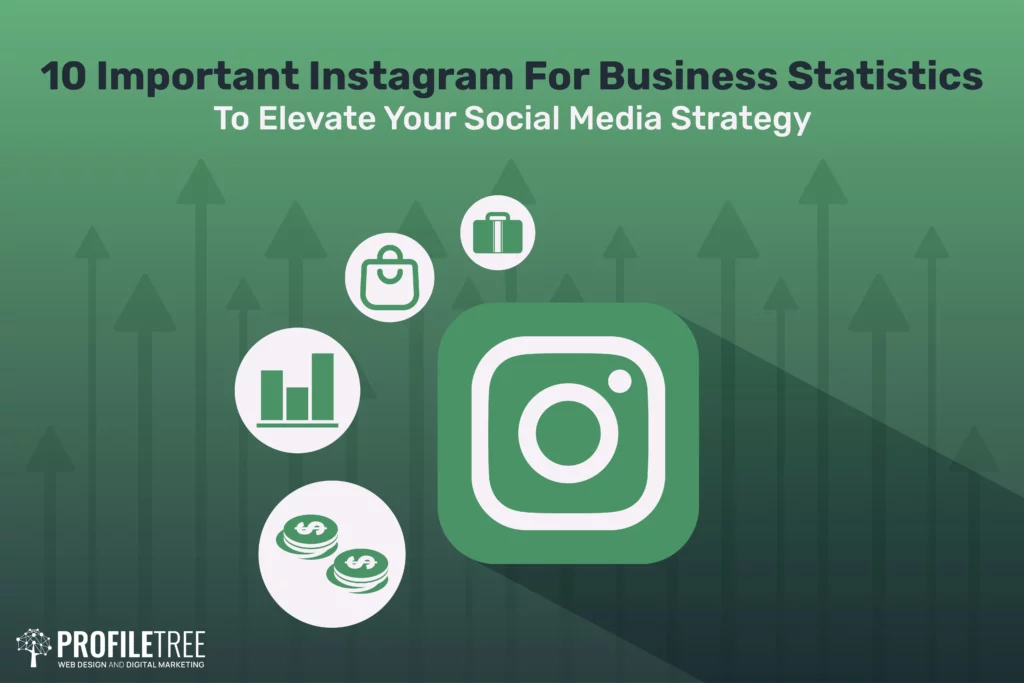Remember the days of marketing fueled by guesswork and intuition? While those gut feelings might have landed a lucky punch here and there, the modern marketing landscape demands a sharper weapon.
Understanding your customers’ deepest desires, predicting their next move, and speaking to them in a language that resonates at their very core; this, my friend, is the ultimate superpower of data-driven marketing statistics.
The arsenal of data-driven marketing statistics serves as a compass, guiding marketers through the vast landscape of information, enabling them to make informed decisions, tailor messages with surgical precision, and, ultimately, achieve unparalleled success in engaging their target audience.
Why Data is Marketing’s Most Valuable Asset?
For decades, marketing was a hazy art form, guided by intuition and fueled by gut feelings. Today, a seismic shift has brought us to a data-driven landscape where customer information is no longer just dust in the crevices but pure, shimmering gold.
Understanding the importance of data in marketing isn’t just about embracing a trend; it’s about wielding the most powerful tool ever conceived to shape consumer decisions and win their hearts.

Data Is the Lifeblood of Informed Decisions
No longer do we fling darts in the dark, hoping by chance to hit the target. Imagine dissecting customer demographics, purchase history, and online behaviour like a mapmaker charting uncharted territory.
By analysing this data, we can predict trends, identify optimal channels, and craft campaigns that resonate on a personal level. It’s the difference between sending a mass email into the void and delivering a handcrafted message that feels like a warm hug from a trusted friend.
Data Paints a Vivid Portrait of Our Customers
No more blurry silhouettes; we can now see customers in full-colour, high-definition detail. We understand their pain points, their aspirations, and their preferred modes of communication. This intimate understanding allows us to craft experiences that feel tailor-made, anticipating their needs before they even arise.
Data can make it possible to deliver a product recommendation that perfectly aligns with a user’s recent browsing history or send a birthday offer on their exact date.
Data Fuels the Engine of Personalisation
In a world bombarded by noise, the ability to stand out is paramount. Data empowers us to create marketing that feels like a one-on-one conversation, not a megaphone announcement. Imagine dynamic website banners that change based on a user’s location or email campaigns that speak directly to their individual interests—data makes them hyper-relevant and hyper-effective.
Data Fuels the Fire of ROI
Forget about throwing marketing dollars into a bonfire. Data allows us to track campaign performance with laser precision, identifying what works and what doesn’t. We can optimise budgets, allocate resources efficiently, and demonstrate the undeniable value of every marketing action. No more guesswork, just cold, hard facts that justify every investment.
Data Is the Foundation of a Loyal Community
By understanding customers on a deeper level, we can foster genuine connections and build lasting relationships. Imagine sending targeted loyalty programs, responding to customer queries with empathy, and proactively addressing their concerns. Data unlocks the door to trust, allowing brands to convert momentary connections into relationships that last a lifetime.
The importance of data in marketing is undeniable. It’s not just a trend; it’s a revolution. By embracing data, we unlock the secrets of customer behaviour, fuel personalised experiences, and ultimately, create marketing that transcends mere transactions and builds relationships that shine brighter than any marketing campaign ever could.
So, open your mind, embrace the data, and prepare to witness the golden age of marketing, where insights are the currency and customer understanding is the ultimate prize.
Data-Driven Marketing Statistics: The Numbers Don’t Lie
Forget anecdotal evidence and hunch-based decisions; the future of marketing hinges on cold, hard data. But beyond the buzzwords and hype, what do the numbers actually tell us about the power of data-driven marketing? Here are some data-driven marketing statistics that paint a clear picture of its staggering impact:
- Growth Explosion: The data-driven marketing market is expected to skyrocket at a compounded annual growth rate (CAGR) of 20.4% from 2021-2028, surpassing $60 billion by the end of that period. This isn’t just a fad; it’s a seismic shift in marketing strategy.
- ROI Revolution: Companies embracing data-driven strategies see a 5-8 times higher ROI compared to their less data-savvy counterparts. It’s like having a money-printing machine powered by customer insights.
- Personalisation Powerhouse: Personalisation fueled by data can boost customer engagement by a whopping 74%. Imagine turning passive onlookers into raving fans simply by speaking their language.
- Conversion Catalyst: Targeted campaigns based on data insights can improve conversion rates by up to 30%. It’s the difference between casting a wide net and reeling in exactly who you want.
- Customer Love Catalyst: 77% of consumers are likelier to choose a brand that offers personalised experiences based on data. They crave that tailored touch, and data makes it possible.
- Leading the Pack: 64% of marketing executives believe data-driven marketing is crucial for success in today’s competitive landscape. The C-suite is on board, and the data backs them up.
These are just a few of the eye-opening data-driven marketing statistics that highlight its undeniable power. It’s not just about cool tech and fancy algorithms; it’s about building genuine connections with your customers, driving engagement, and, ultimately, maximising your bottom line.
How Data-Driven Marketing Analyses Behaviour

Consumers—those elusive creatures who hold the keys to our marketing success. Understanding their wants, needs, and triggers used to be shrouded in mystery. But enter the hero of the hour: data-driven marketing. By wielding the mighty weapon of data, we can finally crack the consumer code, revealing the intricate dance of their behaviour in stunning detail.
Data-driven marketing statistics paint a fascinating picture:
- The Personalisation Paradox: A whopping 80% of consumers are likelier to do business with companies that offer personalised experiences. This presents a golden opportunity for brands that can truly master the art of individualisation.
- The Micro-Moment Magic: Data reveals that consumers make purchasing decisions in a series of “micro-moments” throughout their day. Understanding these fleeting moments of intent, whether it’s researching a product on their phone while commuting or comparing prices at the store, allows brands to deliver relevant messages at the precise moment they’re most receptive.
- The Attention Avalanche: In today’s digital cacophony, the average consumer encounters a staggering 4,000 to 10,000 marketing messages per day. Data helps us cut through the noise, targeting consumers with messages that resonate based on their unique interests and online activity.
- The Emotional Equation: Data analysis goes beyond demographics and purchase history. It can reveal emotional triggers, brand affinities, and even subconscious desires. Imagine crafting a campaign that taps into a shared sense of nostalgia or speaks to a customer’s unspoken aspirations—data makes it possible to connect with customers on a deeper, emotional level.
- The Loyalty Loop: Data analysis isn’t just about acquiring new customers; it’s about nurturing existing relationships. By understanding customer churn factors and satisfaction levels, brands can proactively address concerns and foster loyalty. Data becomes the fuel for building thriving communities and turning occasional shoppers into lifelong brand advocates.
Data Sources in Marketing
Today, information is currency, and customer data is the gold standard. But this vast ocean of data can be both a blessing and a curse for marketers. How do we sift through the endless streams of clicks, likes, and purchases to uncover the real gems—the insights that unlock customer understanding and fuel powerful marketing campaigns? This section will help you navigate the vast and varied landscape of data sources in marketing.
First Mate Customer Data
This treasure trove holds the keys to understanding your core audience. From website analytics revealing browsing patterns to purchase history painting a picture of preferences, customer data offers a personalised view of your target market. Imagine crafting content that speaks directly to their interests or recommending products they’ll genuinely love—customer data makes it possible.
Charting the Social Seas
Facebook, Twitter, Instagram—the social media archipelago is abuzz with consumer chatter. By leveraging social listening tools, we can tap into this real-time feedback, uncover brand sentiment and trending topics, and even identify potential influencers. Imagine tuning into a live conversation about your product, then crafting a campaign that addresses their concerns or leverages their enthusiasm—social media data makes it a reality.
Website Analytics
Every click, scroll, and page view on your website tells a story. Website analytics offer a detailed map of user behaviour, helping us understand how visitors navigate our digital domain. Imagine identifying conversion bottlenecks, optimising page layouts for maximum engagement, or personalising content based on visitor preferences—website analytics provide the data to chart a successful course.
The Search Engine Compass
Google, Bing, Yahoo—these search engines aren’t just gateways to information; they’re treasure maps revealing how users seek out solutions. By analysing search trends and understanding keywords, we can anticipate customer needs and tailor content accordingly.
Imagine targeting users at the exact moment they’re searching for your product or crafting blog posts that answer their burning questions—search engine data guides us to where the treasure lies.
Beyond the Obvious: Uncharted Waters
But wait, there’s more! The data ocean teems with untapped sources, each offering unique insights. Customer surveys reveal hidden desires, A/B testing uncovers optimal campaign strategies, and even weather data can influence ad targeting. Don’t be afraid to explore the less obvious data sources—they might hold the secret to your marketing success.
Data-Driven Marketing Statistics
Let’s not forget the numbers! Studies show that 65% of marketers consider customer data the most valuable marketing asset. Additionally, 72% of businesses report increased conversion rates after implementing website analytics, and 57% attribute customer loyalty to personalised experiences driven by data.
Remember, the most valuable data source is the one that aligns with your specific goals and target audience. So, explore the options, experiment with different tools, and become a master navigator in the vast ocean of marketing data.
Personalisation and Targeting

Remember those days of mass marketing, blasting the same message to everyone and hoping it stuck? In today’s digital landscape, that approach is about as effective as wearing mismatched socks—not a good look. Enter the realm of personalisation and targeting, where data transforms from bland numbers into the fabric of meaningful customer experiences.
Here’s how data-driven marketing statistics paint the picture:
- The Personalisation Payoff: Companies embracing personalisation see a 5-8 times higher ROI compared to their generic-message counterparts. It’s like sending custom-made suits instead of hand-me-downs—your customers appreciate the perfect fit.
- Engagement Explosion: Personalised campaigns can boost customer engagement by up to 74%. Imagine turning passive observers into enthusiastic brand advocates simply by speaking their language and addressing their specific needs.
- Conversion Catalyst: Targeted campaigns based on data insights can improve conversion rates by up to 30%. It’s like aiming an arrow directly at the bullseye instead of shooting blindfolded—precision marketing hits the mark every time.
- The Relevance Revolution: 77% of consumers are more likely to choose a brand that offers personalised experiences. They crave that tailored touch, and data makes it possible to deliver it with unwavering accuracy.
Tools for Data-Driven Personalisation
But how do we achieve this level of personalisation? The toolbox is extensive:
- Dynamic website content: Show different product recommendations, blog posts, and even banner ads based on individual user data. Imagine a website that feels like a personal concierge, anticipating your every need.
- Targeted email campaigns: Segment your audience and send emails that speak directly to their interests and purchase history. Picture crafting messages that feel like handwritten notes from a trusted friend, not generic marketing spam.
- Retargeting ads: Follow users across the web with ads relevant to their browsing behaviour. Think of it as a helpful reminder, nudging them towards a purchase at the perfect moment.
- Lookalike audiences: Expand your reach by finding new customers who share characteristics similar to your existing high-value audience. Imagine cloning your best customers—that’s the power of lookalike audiences.
Personalisation and targeting aren’t just cool tricks; they’re the foundation of building genuine relationships with your customers. By understanding their unique preferences and speaking to them as individuals, you unlock trust, boost engagement, and ultimately, watch your bottom line flourish.
Challenges in Data-Driven Marketing

While data unlocks a treasure trove of possibilities, the path to data-driven marketing success isn’t paved with rose petals. There are inevitable bumps and hurdles along the way, and acknowledging these challenges is crucial for any aspiring marketing captain. So, let’s chart the potential choppy waters and equip ourselves with the tools to navigate them with aplomb.
Data Deluge Overload
The sheer volume of data can be overwhelming, leading to analysis paralysis and missed opportunities. Imagine being buried in a treasure chest overflowing with gold—it’s valuable, but sifting through it can be daunting. Focus on identifying and prioritising the data most relevant to your goals, and invest in tools that automate analysis and reporting.
Data Quality Quandary
Garbage in, garbage out—the quality of your data directly impacts the accuracy and effectiveness of your marketing efforts. Imagine building a ship with rotten wood—it’s bound to sink. Implement data cleansing and validation processes to ensure the integrity of your information, and consider collaborating with data specialists for quality checks.
Privacy Paradox
As we delve deeper into personal data, navigating the ever-evolving landscape of privacy regulations can be tricky. Imagine sailing through a maze of changing currents—one wrong turn could land you in hot water. Stay updated on privacy laws, prioritise transparency with your customers, and ensure your data practices adhere to ethical and legal frameworks.
Talent Tempest
Effectively utilising data requires a skilful crew—analysts, scientists, and marketing professionals who can interpret, translate, and act upon insights. Imagine setting sail without a navigator—you’re bound to get lost. Cultivate a data-driven culture within your organisation, invest in training programs, and consider recruiting talent with specific data expertise.
Technology Tsunami
Keeping up with the ever-evolving landscape of marketing technology can be a constant struggle. Imagine trying to pilot a ship with outdated sails—you’ll be left in the dust. Regularly evaluate and update your tech stack, embrace emerging technologies like AI and machine learning, and don’t be afraid to seek partnerships with technology providers.
Measurement Mishaps
Without proper measurement, data-driven marketing becomes a voyage in the fog. Imagine charting your course without a compass—you’ll never know if you’re actually making progress. Define clear marketing metrics aligned with your goals, track performance consistently, and utilise tools for comprehensive campaign analytics.
Integration Impasse
Silos within your organisation can hinder the flow of data and impede the seamless execution of data-driven campaigns. Imagine a ship’s crew working in isolation—the vessel will never reach its destination. Promote cross-functional collaboration, break down organisational walls, and establish clear communication channels for data sharing.
Change Chasm
Transitioning to a data-driven approach can be met with resistance and scepticism. Imagine trying to steer a crew accustomed to traditional methods towards uncharted waters—there will be apprehension. Cultivate a culture of learning and experimentation, address concerns proactively, and demonstrate the tangible benefits of data-driven marketing through consistent successes.
Despite these challenges, the rewards of conquering them are undeniable. By navigating the minefield with awareness, strategic planning, and the right tools, data-driven marketing becomes a powerful weapon in your arsenal, guiding you towards customer-centric campaigns, optimised strategies, and a thriving brand.
Data-driven marketing isn’t just a trend; it’s a revolution reshaping the very fabric of how we connect with customers. As we move forward, the landscape will evolve, algorithms will become even smarter, and data will become an even more powerful tool. Embrace the journey, equip yourself with the right tools, and remember, in the data-driven future, the brands that truly understand their customers will be the ones steering the ship towards long-lasting success.


